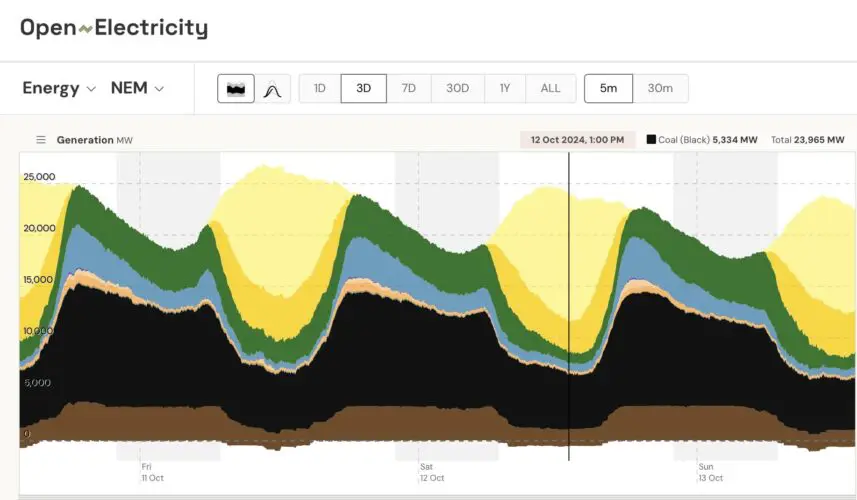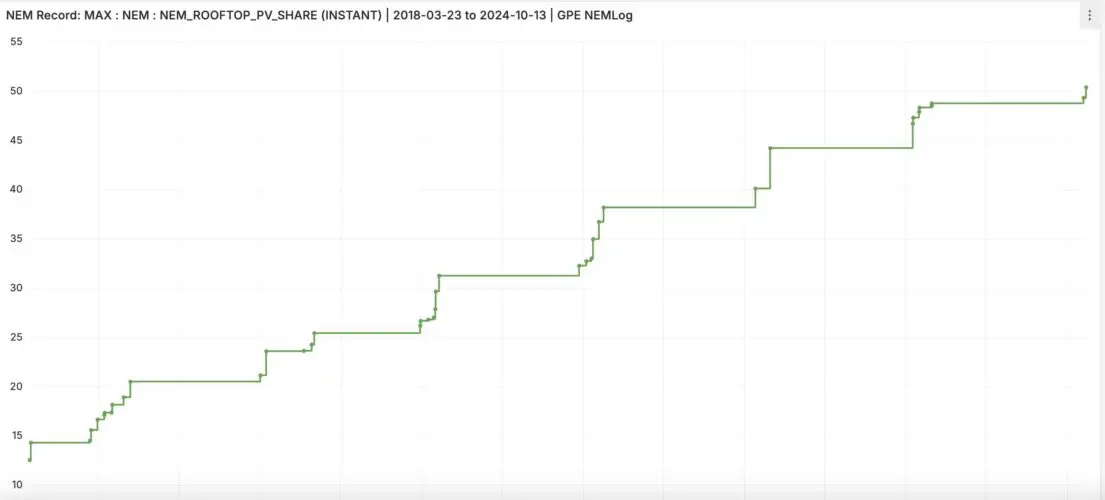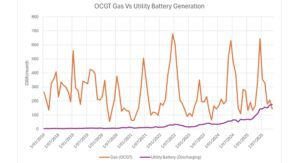Rooftop solar has achieved a major milestone on Australia’s main grid, supplying more than 50 per cent of demand for the first time.
The milestone was reached, according to the data collectors at GPE NEMLog, at 1pm (AEST) on Saturday, when the output of solar PV mounted on the rooftops of millions of Australian households and businesses reached 50.4 per cent.
This beat the previous record of 49.3 per cent set just six days earlier.
There is now more than 23 gigawatts (GW) of rooftop solar in Australia, including the separate W.A. grid and other smaller remote networks, but this is expected to grow four-fold in coming decades.

Households and businesses are being drawn to the technology to help offset their soaring electricity bills, but it is also having broader benefits – lowering wholesale prices in the middle of the day, and effectively killing the business model of legacy coal fired generators.
A succession of state and nation-wide rooftop PV output records has coincided with new record minimums for coal and gas output. Last week, the average coal share over a seven day period fell below 50 per cent for the first time, and the instantaneous share fell below 25 per cent for the first time.
The growth of rooftop solar output, particularly in spring which enjoys mild temperatures and so less demand for either heating or cooling, means that levels of “operational” demand on the grid (the demand not met by rooftop PV) is also falling to record lows.
This is starting to cause headaches for the market operator, which has begun to issue new “minimum system load” warnings that could require big batteries to be on standby to create demand in the middle of the day, or by switching off rooftop solar remotely as a last resort.
The biggest headache, however, is for the ageing fossil fuel generators who are having to abandon their “base-load” operating procedures and learn how to dance around rooftop solar during the middle of the day, which means they can no longer be “always on”.
Some have learned how to ramp down to just 20 per cent of their rated capacity and back up again. In a landmark announcement just a few weeks ago, AGL said it had successfully trialled turning one of its coal units at Bayswater off and back on again in the same shift.

That could be important, both in managing the exit of coal in a more constructive way, reducing the number of negative pricing events (it’s usually the coal generators that drive the prices below zero), and so also reducing the amount of large scale solar and wind that also needs to be curtailed during times of excess rooftop solar.
The speed of the change is breathtaking. Just three years ago the maximum instantaneous penetration of rooftop solar was 38 per cent. Six years ago, in 2018, it was just 12.6 per cent, according to the GPE NEMlog data highlighted in the graph above.








